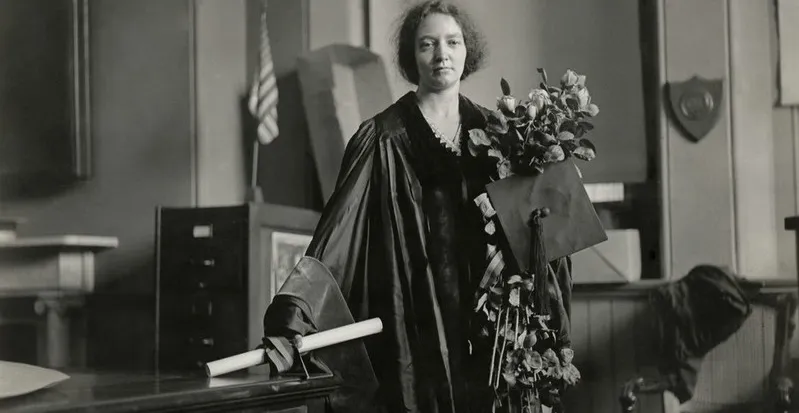How Nobel laureate Irene Joliot-Curie left her mark on science
She discovered the missing part of the heart of matter but unfortunately didn't get the credit. Undeterred, she went on to advance her illustrious scientist mother's contribution by recreating in the lab a key natural phenomenon, thus achieving the long human quest to transform substances — laying the foundation for manipulating the atom's immense energy for purposes beneficial and destructive.
But our modern and successful alchemist Irene Joliot-Curie, whose 120th birth anniversary was on Tuesday (September 12), was no ordinary person — for no other woman, or any man for that matter can match her scientific pedigree.

There are couples or fathers and sons who have both got the Nobel Prize, but she is the only one both whose parents, Pierre and Marie Curie, were laureates (her mother twice, in different disciplines) before winning it herself with her husband Frederic, who was initially her pupil.
The Joliot-Curies were unlucky to miss winning the Nobel twice earlier, for the couple had found proof of the neutron, the missing component of atomic nuclei, as well as the positron, the electron's anti-particle counterpart, thus proving the existence of anti-matter. However, they failed to recognise the significance of their discoveries.
Both the near misses, however, led them to discover artificial radioactivity. While it was known that a nucleus could be split into stable parts on being bombarded with a sufficiently powerful particle, no one till the Joliot-Curies found out that "in certain circumstances, an unstable element in the process of nuclear decay could be created" and elements forced to release their energy in the form of radioactive decay (as per Diana Preston in Before the Fallout: From Marie Curie to Hiroshima).
This won them the Nobel Prize in Chemistry in 1935 and led to studies of fission of heavy metals with all its implications on human health and power generation — as well for a whole range of destructive weapons.
The eldest daughter of the famed Marie and Pierre Curie, Irene was born in Paris on September 12, 1897, and showed scientific aptitude early. When she was 10 years old, she was put into 'The Cooperative', for which Madame Curie teamed with some of France's most distinguished academics, to teach at home each other's children a curriculum of both science and humanities.
After two years, she went back to traditional schooling, but this was interrupted by World War I. During the conflict, she helped her mother run her mobile field hospitals — with primitive X-ray equipment which helped doctors in locating shrapnel in wounded soldiers. However, these led to both mother and daughter suffering large doses of radiation exposure. (This, coupled with their literally hands-on approach to radioactive materials, would eventually cause their deaths.)
After the war, she returned to Paris to study at the Radium Institute, set up by her parents, and completed her doctorate in 1925. She became her prematurely frail mother's closest collaborator and a model of the oblivious, graceless scientist.
Now in her mid-20s, Irene was tall and sturdily built, with a direct, piercing, sometimes disconcerting gaze. Einstein thought she had the characteristics of a grenadier. Other contemporaries recalled her as sometimes haughty and conscious of her status as Marie Curie's daughter and at other times 'very uncouth'. She had little concern for appearances or convention, happily hiking her skirts to rummage in her petticoat for a handkerchief to blow her nose, Preston writes.
In 1924, Irene was asked to teach laboratory techniques to Frederic, a young chemical engineer, and went on to marry him in 1926. Hyphenating their surnames, they also combined their research efforts on atomic nuclei. Missing out on the neutron and the positron, they, however, achieved a place in the pantheon of science with the discovery of artificial radioactivity in 1934.
But Irene, despite her perceived lack of graces, was not entirely oblivious to the world. She and her husband were aware of the dangers of fascism and spoke out against it, while she also sought to promote science, being appointed France's undersecretary of state for scientific research in 1936.
However, the long exposure to radioactive substances finally caught up with her. Contacting TB, she spent most of the Second World War convalescing in Switzerland. While she returned to both her political and scientific career after the war, she was diagnosed with leukaemia, to which she succumbed to in 1956.
Continuing the tradition of the women in the family, her daughter Helene (born 1927) became a nuclear physicist (son Pierre, b. 1932, became a biochemist).
With inputs from IANS.
Do you have an interesting story to share? Please write to us at [email protected]. To stay updated with more positive news, please connect with us on Facebook and Twitter.







